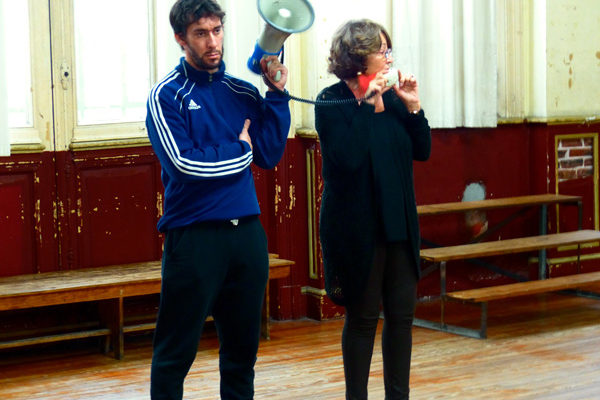
Buenos Aires
June 27, 2016
Today’s Argentine children have not enjoyed the advantage that previous generations had: learning tango music and dance at home or in neighborhood clubs.
At present, due to the most recent influx of immigration from Latin American countries, cumbia music and dance have overshadowed the popularity of tango among youth. A paradoxical situation has evolved: interest in tango keeps diminishing at home and keeps growing throughout the entire world.
Unlike other cultures, Buenos Aires’ is fully organic with the warm and inclusive embrace of the tango. Because of the humanity of the dance, it seems invaluable to revive interest at home – where people are naturals at feeling comfortable embraced to strangers. Yes, embraced-to- strangers! Where else could this ideal communication with stranger human beings occur? Societies do not offer such possibility.
With these thoughts in mind I planned and led one interactive pilot experience with a group of ninety-six elementary school students grades 6 and 7th. This 90 minute program demonstrated how this art represents our identity, rectified the mythology about the origins of the dance, differentiated stage from social tango, and offered instruction in basic tango steps. It showed that 6 and 7 th graders can maintain attention for 90 minutes and enjoy an interactive program which combines conversation and practice.
The Golden era of Tango keeps getting farther and farter away. The knowledge and respect for Tango no longer passes spontaneously from one generation the next.
We have to think about passing it on to new generations in more formal ways. It would be wise to offer programs not only in schools but also in neighborhood clubs.

Students concentrating on footwork
Llevando la Cultura del Tango y los Pasos Básicos de la Danza a la Escuela Primaria
Buenos Aires. Junio 27, 2016
Los niños Argentinos no gozan de la ventaja que generaciones anteriores han tenido: aprender tango música y baile en sus casas o en los clubs de barrios.
Actualmente, debido a la ola inmigratoria proveniente de países Latinoamericanos, el baile y la música “cumbia” desplazaron la popularidad del tango entre los jóvenes.
Es así como nos encontramos frente a una situación paradójica: el interés en el tango va disminuyendo en su ciudad natal, mientras sigue aumentando en el mundo entero.
A diferencia de otras culturas, la de Buenos Aires es totalmente orgánica con el abrazo cálido e inclusivo del tango. Por eso nació aquí y no en ningún otro lugar del mundo.
Nuestro baile posee una humanidad merecedora de esfuerzos a fines de mantenerlo viviente en su tierra natal, donde su gente se siente cómoda abrazando a extraños.
Si, abrazando a extraños! Acaso ofrecen las sociedades una forma tan personal de comunicarse con desconocidos? Ciertamente las sociedades desvalorizan al desconocido y los mantienen marginados.
Con estas reflexiones en mente, planeé y conduje una experiencia piloto con un grupo de 96 niños de la escuela primaria, grados sexto y séptimo. En este programa de 90 minutos pude trasmitir cómo nuestro arte Tango nos representa, así como también rectificar la mitología que desvaloriza sus orígenes. Pude diferenciar el tango de escenario del tango social y ofrecer instrucción en pasos básicos del baile.
Comprobamos que los alumnos pueden mantener su atención por 90 minutos y disfrutar de un programa que combina conversación y práctica.
La época de oro del tango va quedando cada día más lejana, el conocimiento y respeto por el Tango ya no se pasa espontáneamente de generación a generación.
Para mantenerlo viviente es recomendable planear programas no solo en las escuelas sino también en clubs sociales.

Practice time

